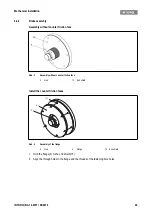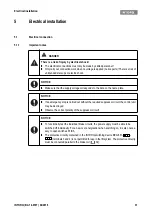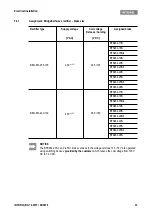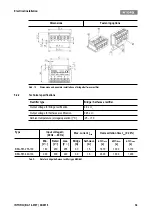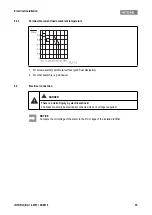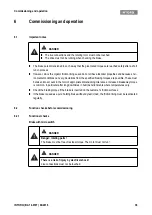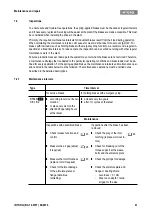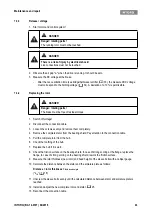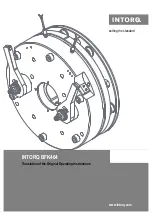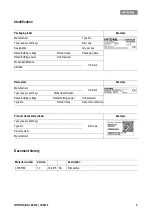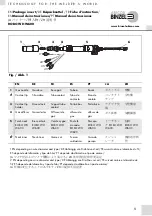
Commissioning and operation
INTORQ | BA 14.0197 | 04/2016
37
1. The switching contact for the brake must be open.
2. Remove two bridges from the motor terminals to de-energise the motor.
-
Do
not
disconnect the supply voltage for the brake. Apply DC voltage to the brake.
3. Apply DC voltage to the brake.
4. Measure the AC voltage at the motor terminals. The measured level must be zero.
5. Close the switching contact for the brake.
-
The brake is released.
6. Measure the DC voltage at the brake:
-
The measured DC voltage after the over-excitation time (see bridge/half-wave rectifier,
must correspond to the holding voltage (see table 5). A deviation of ±10 % is permissible.
7. Check the air gap "s
L
".
-
It must be zero and the rotor must rotate freely.
8. Check the switching status of the microswitch (see table 6).
9. Open the switching contact for the brake.
-
The brake is applied.
10. Check the switching status of the microswitch (see table 6).
11. Switch off DC voltage for the brake.
12. Screw the bridges onto the motor terminals.
13. If necessary, remove the neutral conductor from the neutral point (step 2).
NOTICE
If the brake is connected to the neutral point of the motor, the PE conductor must also be con-
nected to this point.
Contact type
Connection
Brake released
Microswitch closed
NC contact
black / grey
yes
no
no
yes
NO contact
black / blue
yes
yes
no
no
Tab. 6:
Switching status of the microswitch
Summary of Contents for WSG-TB.3 series
Page 29: ......
Page 30: ......
Page 31: ......
Page 33: ......
Page 37: ......
Page 38: ......
Page 39: ......
Page 43: ......
Page 44: ......
Page 45: ......
Page 46: ......
Page 47: ......
Page 95: ...Notes INTORQ BA 14 0197 04 2016 48 Notes...
Page 144: ...Notes INTORQ BA 14 0210 12 2016 48 Notes...
Page 145: ...Notes INTORQ BA 14 0210 12 2016 49...
Page 146: ...Notes INTORQ BA 14 0210 12 2016 50...
Page 147: ......


